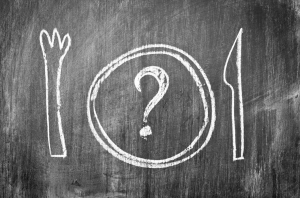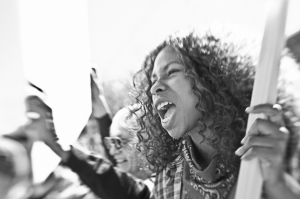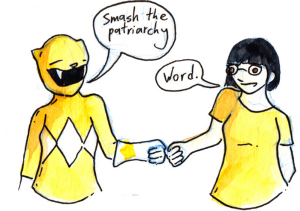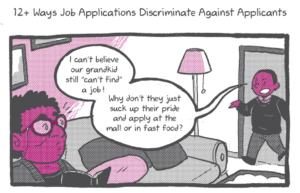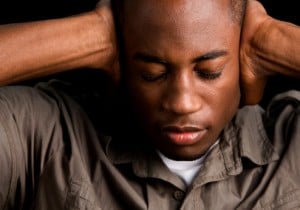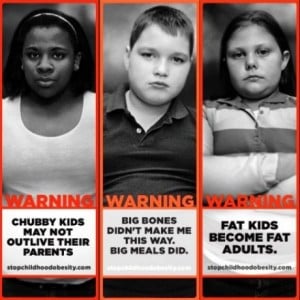Recently, I was at my partner’s house, passing back and forth a box of granola, dancing around one another to grab our respective bowls, spoons, and turns with the milk.
From a drawer, I pulled out two measuring cups – the half-cup for the granola and the third-cup for the milk – to ensure that I measured out the official, FDA-approved serving sizes.
My partner looked at me quizzically – his bowl full of who-knows-how-much granola, because he simply eyeballed how much he wanted – as if asking me what I was doing.
And suddenly I had a flashback.
I’m sitting with someone in his room, our newly delivered Mexican food spread out across the bed. Unthinkingly – if anything, thoughtfully – he extracts a single tortilla chip from the greasy brown paper bag and offers it to me.
I take it in between my thumb and forefinger. I stare at it. I examine how the oil coats my fingertips, how the salt glistens in tiny crystals. And then – deliberately, meticulously – I nibble off a single corner, chew it slowly, and then swallow. Which brings me back around to staring at it before taking another bite.
And in my peripheral vision, I can see him squinting his eyes at me in confusion.
And then, from even further back in the Rolodex of my mind, another memory surfaces:
I’m working a desk job, and I keep a plethora of snacks – all “safe foods,” mind you – in one of my drawers. I absentmindedly pile the raw almonds and dried cranberries I’ve pulled out to eat into bite-size hills of the perfect sweet-to-savory, chewy-to-crunchy ratios.
I look up, and my coworker is watching me in bewilderment.
I have a fucked up relationship with food, okay?
One that’s constantly exacerbated by the fact that I’m in eating disorder recovery – and therefore constantly thinking and rethinking my choices around food: “Is this what normal people do? Is this healthy? Is this behavior disordered, or is it just something I picked up somewhere along the way?”
Unlike the average person, I spend a lot of time examining my thoughts and behaviors around food, trying to work out what’s right and wrong for my body amidst not only a confused eating-disordered brain, but also a confused culture that teaches us unhealthy eating habits, and tells us they’re okay.
“A lot of people pay attention to nutritional information and measure out their food accordingly,” I tell myself. “A lot of people regard food as a kind of moral decision that takes deep consideration. And a lot of people have rituals attached to food that make them feel more comfortable eating it.”
My internal monologue presses: “A lot of people have fucked up relationships with food, okay?”
But, really, the issue is that a lot of people exhibit disordered eating patterns, but have no idea that there’s a name for it – that there is, indeed, a seemingly gray space between eating healthily and a straight-up, full-blown eating disorder.
And a lot of us – and especially women – are there.
Our eating habits are complicated, toxic, unhealthy, and disordered. And we know it’s not right – that it doesn’t feel good, that it stresses us out – but we’re not convinced we have an eating disorder.
But when you consider that over half of teenage girls engage in skipping meals, fasting, vomiting, or taking laxatives to control their weight; that the average Weight Watchers dieter is required to eat under 1,000 calories per day; and that nearly half of women feel guilty after eating carbohydrates, the hard truth is that our “fucked up relationships with food” are actually disordered eating patterns.
Because even if you’re not experiencing what you think is a full-symptom eating disorder, a lot of the tips and tricks that our upbringing sells to us as “self-control” and “healthy eating” are damaging. Anything that inspires within us feelings of guilt and shame around food are damaging.
And I think it’s about time that we call this in-between space – where most of us are – what it really is so that we can dig deeper into the negative feelings that we associate with food – and maybe eventually break free.
But first, how do we even recognize where on the spectrum of eating habits we are?
Well, I’m glad you asked.
1. Are Your Eating Habits Driven By Intuition?
Let’s talk about “order” before we even address “disorder.”
I’ll be the first to admit that I hate our cultural imperative to define and quantify “health” – which is why I usually tend to avoid the word.
But our relationships with food exist on a spectrum – and it starts with whatever “healthy” eating looks like.
But when I say “healthy eating,” I’m not talking at all about what we’ve been sold is “healthy eating.”
When I say “healthy eating,” I’m talking about a process of nourishing our bodies that makes us feel both functional and happy, that considers both our bodies’ needs and their wants.
I’m talking about intuitive eating – which is something that we’re all born with, but are taught to ignore. And it’s a practice that some folks are working on reclaiming in order to make peace with food again.
Intuitive eating is choosing a salad when the idea of that first crunch of lettuce and the wispy texture of sprouts against your tongue makes you salivate – and about eating a slice of cheesecake when the feeling of smooth, creamy sweetness gliding down your throat makes you do the same.
Intuitive eating is deciding to grab a snack simply because you feel a hunger pang. It’s sitting down and enjoying a meal by focusing on both the pleasure and the satisfaction that it gives you, rather than rushing through eating while multitasking – driving or working or watching TV. It’s finishing eating when you’re satiated, not thinking twice about whether you ate too much or too little.
According to Ellyn Satter, intuitive – or “normal” – eating “is flexible. It varies in response to your hunger, your schedule, your proximity to food, and your feelings.” And while it “takes up some of your time and attention,” it “keeps its place as only one important area of your life.” It’s “trusting your body.”
And we’re all born with this instinctual understanding around food!
I mean, just watch a baby eat – especially an infant who’s breastfeeding. Babies know when they’re hungry (and they make sure we all know it, too) – and when they’re full, they simply stop eating.
We could learn a lot from babies.
But as we get older and start to internalize cultural and media messages around food and bodies, this understanding takes a backseat – almost to the point of obliteration.
Which is why probably most of you are reading this like, “Seriously? Who eats like this?”
Because while we all should eat like this, instead of accepting the ways in which our physiological needs have control over us, we start to think that we have (and, more to the point, even strive to have) control over our bodies.
We stop letting our bodies tell us what we need, and we start telling our bodies what we think they need.
And that’s when the disorder can come creeping in.
2. Are Your Eating Habits Learned (And Then Forced)?
I would argue that any eating behaviors that we engage in that are manipulated and counter to our intuitive wisdom are out of order – as in, our of accordance with the natural order of things. They’re disordered.
Which—um—is basically everything we’re taught to do.
While intuitive eating is natural and ordered, disordered eating is technically defined as “a wide range of abnormal eating behaviors, many of which are shared with diagnosed eating disorders.” But what, exactly, defines “abnormal?”
It’s compulsively overeating, emotional eating, self-induced vomiting, regularly skipping meals, using diet pills, abusing laxatives, and fasting for weight control.
It’s basing your self-worth on shape and weight, chronically restraining your eating, and obsessively counting calories.
It’s every example that I gave at the beginning of this piece about how I have “a fucked up relationship with food.”
It’s—well—what we’ve come to understand as dieting or otherwise “controlling” our intake.
I’m imagining the sounds of tires screeching – your brain halting from that information overload – as you turn to me to argue vehemently.
But let me explain: Disordered eating describes any learned eating behavior that is counter to our intuition.
And any eating behavior that takes excessive thought (i.e. anything more involved than “What’s in the refrigerator?” or “What do I need to remember to buy at the store?”) is no longer intuitive – it’s forced.
Counting calories is a learned behavior. Only eating whatever you deem “healthy” or “safe” is a learned behavior. Compensatory behaviors are learned. Dieting? Learned. They’re things we force our bodies to do against their natural order.
And while the truth of the matter is that most people eat this way because it’s how we’ve been socialized to relate to food, if it becomes rigid to the extent that you’re actively ignoring the physiological (hunger pangs or the feeling of the belly being full) and psychological (“I want a slice of cake” or “I’ll feel sick if I binge on this”) cues around eating, then your relationship with food has become unhealthy.
3. Do Your Eating Habits Control Your Life?
It’s unsurprising that 35% of average dieters progress to pathological dieting, and that 20-25% of those progress to partial- or full-syndrome eating disorders.
And honestly, we could wax philosophical – or psychological, as it were – about what separates an eating disorder from disordered eating all day.
And I could take the easy way out and usher you to the DSM (the latest version, by the way, includes some kick-ass updates to eating disorder diagnostic criteria), but I’ll give you the Cliffs Notes version: According to the DSM, it mostly has to do with frequency (how often) and severity (how debilitating).
The way I look at it is this: What categorizes an eating disorder is its control over your life, to the extent that it makes everyday living more difficult, to the point that it interferes with your ability to have a happy, balanced life.
Disordered eating can absolutely be obsessive and compulsive – patterns that we think about constantly and adhere to without challenging – but an eating disorder takes hold of your entire life.
With an eating disorder, your friends stop calling because you’re irritable all the time from carrying around guilt and shame. With an eating disorder, you call out of work because you’re sick from forcing your body to do things that don’t nourish it.
With an eating disorder, there are literally days when you refuse to get out of bed or leave the house because you’re ashamed to have your body seen.
But the line between disordered eating and an eating disorder is actually a very thin one, which is exactly why I think we need to take the former seriously, too.
Because they have the same root.
And the core problem is the ways in which we’re socialized around food. The core problem is that we’re taught to ignore our bodies’ intuition in pursuit of a sense of control that’s unattainable and – to be honest – scary.
And if we want to truly be happier and healthier, then we need to start addressing the ways in which our relationships with food are broken, regardless of where on the spectrum we fall.
***
I’ll tell you right now that having an eating disorder is no fun. If anything, it’s hell.
But I can’t say that living with disordered eating patterns feels much better.
Because we can heal our relationships with our bodies – and we can heal our relationships with food.
But before we can journey on toward healing, we need to be honest with ourselves about what the problem is.
And the problem is that we’ve standardized disordered eating to the point that we think it’s normal.
And I think that the first step to moving past it is to name it – and to want to fight it.
***
If you’re wondering how to better understand your own relationship with food as per this spectrum, the National Eating Disorders Association (NEDA) has an online screening tool here.
[do_widget id=’text-101′]
Melissa A. Fabello, Co-Managing Editor of Everyday Feminism, is a sexuality educator, eating disorder and body image activist, and media literacy vlogger based out of Philadelphia. She enjoys rainy days, Jurassic Park, and the occasional Taylor Swift song and can be found on YouTube and Tumblr. She holds a B.S. in English Education from Boston University and an M.Ed. in Human Sexuality from Widener University. She is currently working on her PhD. She can be reached on Twitter @fyeahmfabello.
Search our 3000+ articles!
Read our articles about:
Our online racial justice training
Used by hundreds of universities, non-profits, and businesses.
Click to learn more
Most Read Articles
- « Previous
- 1
- …
- 30
- 31
- 32


